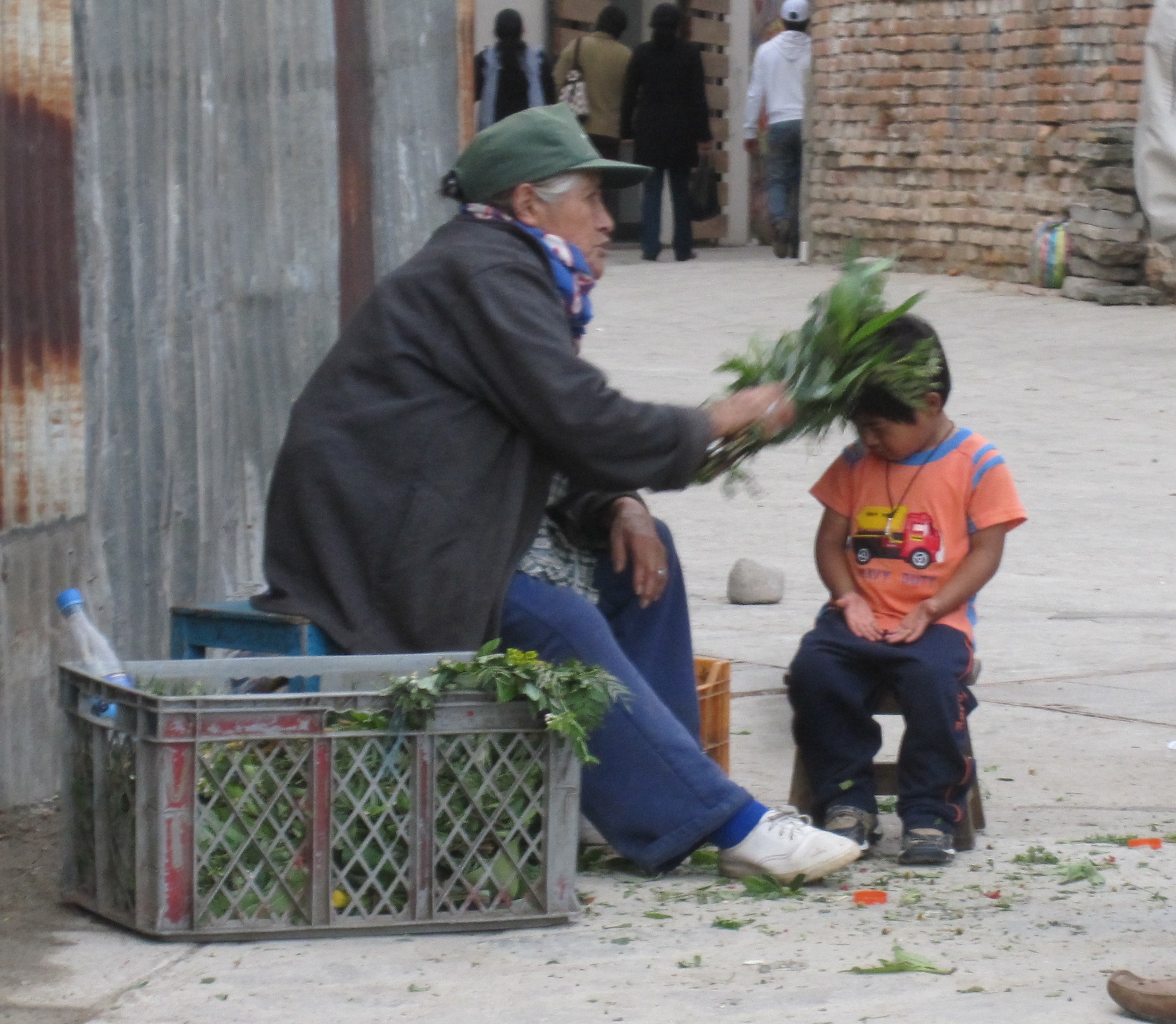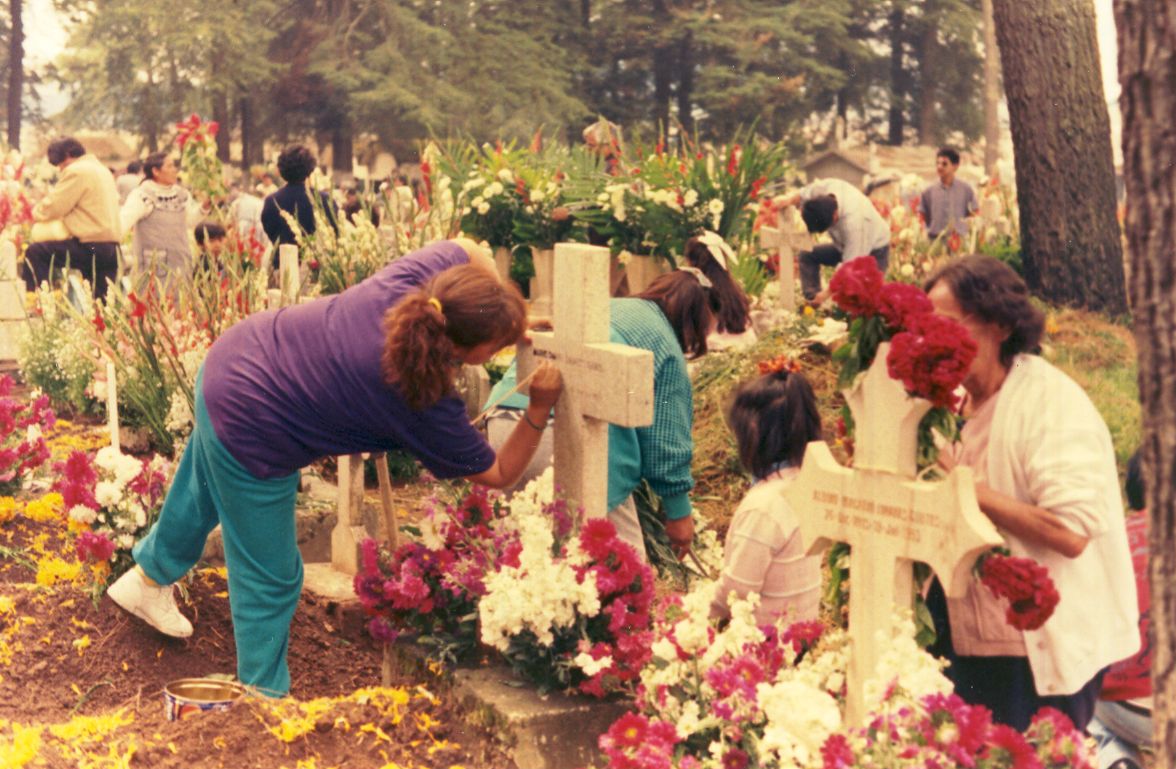|
Catemaco, Veracruz
Catemaco () is a city in Catemaco Municipality located in the south of the Mexican state of Veracruz. The city is located on Lake Catemaco, with the municipality stretching north to the Gulf of Mexico. Catemaco is a tourist destination, with its main attractions being the lake, remnants of the region's rainforest and a tradition of sorcery/witchcraft that has its roots in the pre-colonial period and is mostly practiced by men. This tradition is well-known in Mexico and attracts clients from various walks of life, including businessmen and national-level politicians. Catemaco holds an annual event in March dedicated to sorcery, which can draw up to 5,000 visitors. The city The city of Catemaco is located in southern Veracruz, about 160 km from the port of Veracruz and 220 km from the state capital of Xalapa. It is located inland, extending 2.5im along the shore of Lake Catemaco, a large freshwater lake, which is one of the city's main tourist attractions, along with its ... [...More Info...] [...Related Items...] OR: [Wikipedia] [Google] [Baidu] |
Settlement Classification In Mexico
Mexico's states classify their settlements in a variety of fashions: Aguascalientes Under Article 106 of the Municipal Law of the State of Aguascalientethe state defines its settlements as follows: *''Ciudad'' (city): Census population in excess of 15,000 inhabitants. *''Villa'' (town): Census population of over 1,000. *''Poblado'' (village): Census population of between 500 and 1,000. *''Ranchería'' (hamlet): All other settlements. Baja California Baja California Sur According to Article 10 of the Organic Municipal Law of the State of Baja California Suthe state classifies its settlements as follows: *''Ciudad'' (city): A settlement with more than 12,000 inhabitants, or a municipal seat irrespective of population. *''Villa'' (town): More than 5,000 inhabitants. *''Pueblo'' (village): More than 2,000 inhabitants. *''Congregación'' (congregation): More than 200 inhabitants. *''Ranchería'' (hamlet): Fewer than 200 inhabitants. Campeche According to Article 12 of the Or ... [...More Info...] [...Related Items...] OR: [Wikipedia] [Google] [Baidu] |
Neoclassical Architecture
Neoclassical architecture is an architectural style produced by the Neoclassical movement that began in the mid-18th century in Italy and France. It became one of the most prominent architectural styles in the Western world. The prevailing styles of architecture in most of Europe for the previous two centuries, Renaissance architecture and Baroque architecture, already represented partial revivals of the Classical architecture of ancient Rome and (much less) ancient Greek architecture, but the Neoclassical movement aimed to strip away the excesses of Late Baroque and return to a purer and more authentic classical style, adapted to modern purposes. The development of archaeology and published accurate records of surviving classical buildings was crucial in the emergence of Neoclassical architecture. In many countries, there was an initial wave essentially drawing on Roman architecture, followed, from about the start of the 19th century, by a second wave of Greek Revival architec ... [...More Info...] [...Related Items...] OR: [Wikipedia] [Google] [Baidu] |
Curandero
A ''curandero'' (, healer; f. , also spelled , , f. ) is a traditional native healer or shaman found primarily in Latin America and also in the United States. A curandero is a specialist in traditional medicine whose practice can either contrast with or supplement that of a practitioner of Western medicine. A curandero is claimed to administer shamanistic and spiritistic remedies for mental, emotional, physical and "spiritual" illnesses. Some curanderos, such as Don Pedrito, the Healer of Los Olmos, make use of simple herbs, waters, or mud to allegedly affect their cures. Others add Catholic elements, such as holy water and pictures of saints; San Martin de Porres for example is heavily employed within Peruvian curanderismo. The use of Catholic prayers and other borrowings and lendings is often found alongside native religious elements. Still others, such as Maria Sabina, employ hallucinogenic media. Many curanderos emphasize their native spirituality in healing while being pr ... [...More Info...] [...Related Items...] OR: [Wikipedia] [Google] [Baidu] |
Day Of The Dead
The Day of the Dead ( es, Día de Muertos or ''Día de los Muertos'') is a holiday traditionally celebrated on November 1 and 2, though other days, such as October 31 or November 6, may be included depending on the locality. It is widely observed in Mexico, where it largely developed, and is also observed in other places, especially by people of Mexican heritage. Although related to the simultaneous Christian remembrances for Hallowtide, it has a much less solemn tone and is portrayed as a holiday of joyful celebration rather than mourning. The multi-day holiday involves family and friends gathering to pay respects and to remember friends and family members who have died. These celebrations can take a humorous tone, as celebrants remember funny events and anecdotes about the departed. Traditions connected with the holiday include honoring the deceased using calaveras and marigold flowers known as ''cempazúchitl'', building home altars called '' ofrendas'' with the favorite fo ... [...More Info...] [...Related Items...] OR: [Wikipedia] [Google] [Baidu] |
Ciudad Juárez
Ciudad Juárez ( ; ''Juarez City''. ) is the most populous city in the Mexican state of Chihuahua. It is commonly referred to as Juárez and was known as El Paso del Norte (''The Pass of the North'') until 1888. Juárez is the seat of the Juárez Municipality with an estimated population of 1.5 million people. It lies on the Rio Grande (Río Bravo del Norte) river, south of El Paso, Texas, United States. Together with the surrounding areas, the cities form El Paso–Juárez, the second largest binational metropolitan area on the Mexico–U.S. border (after San Diego–Tijuana), with a combined population of over 2.7 million people. Four international points of entry connect Ciudad Juárez and El Paso: the Bridge of the Americas, the Ysleta–Zaragoza International Bridge, the Paso del Norte Bridge, and the Stanton Street Bridge. Combined, these bridges allowed 22,958,472 crossings in 2008, making Ciudad Juárez a major point of entry and transportation into the ... [...More Info...] [...Related Items...] OR: [Wikipedia] [Google] [Baidu] |
Fidel Herrera Beltrán
Fidel Herrera Beltrán ( Nopaltepec, Veracruz, March 7, 1949) is a Mexican politician and former governor of the state of Veracruz. A member of Institutional Revolutionary Party (PRI), he was elected governor in 2004. Prior to that, he was deputy in the XLIX Legislature for Cosamaloapan, LI Legislature for Pánuco, LV Legislature for Cosamaloapan and LVII Legislature for Boca del Río and a senator representing Veracruz in the LVIII Legislature. He is a lawyer by profession, having attended law school at UNAM. In 2013, ''Forbes'' magazine named Herrera as one of the 10 most corrupt Mexican politicians, citing his alleged links to the Los Zetas Los Zetas (, Spanish for "The Zs") is a Mexican criminal syndicate, regarded as one of the most dangerous of Mexico's drug cartels. They are known for engaging in brutally violent "shock and awe" tactics such as beheadings, torture, and indiscri ... drug-trafficking cartel. References External links Official Biography (Span ... [...More Info...] [...Related Items...] OR: [Wikipedia] [Google] [Baidu] |
Coatzacoalcos
Coatzacoalcos () is a major port city in the southern part of the Mexican state of Veracruz, mostly on the western side of the Coatzacoalcos River estuary, on the Bay of Campeche, on the southern Gulf of Mexico coast. The city serves as the municipal seat of the municipality of the same name. It is the state's third largest city, after Veracruz City and Xalapa. Etymology Coatzacoalcos comes from a Nahuatl word meaning "site of the Snake" or "where the snake hides." According to the legend, this is where the god Quetzalcoatl made his final journey to the sea in around 999 and he made his promise to return. History Coatzacoalcos sits within the Olmec heartland. Excavations in 2008 for a tunnel under the Coatzacoalcos River indicate a substantial pre-Hispanic population. By the time of the Spanish arrival the area was under Mayan influence. In 1522, Hernán Cortés ordered Gonzalo de Sandoval to fund a settlement near Guazacualco. Sandoval named it Villa del Espíritu Santo. ... [...More Info...] [...Related Items...] OR: [Wikipedia] [Google] [Baidu] |
Mexican Handcrafts And Folk Art
Mexican handcrafts and folk art is a complex collection of items made with various materials and intended for utilitarian, decorative or other purposes. Some of the items produced by hand in this country include ceramics, wall hangings, vases, furniture, textiles and much more. In Mexico, both crafts created for utilitarian purposes and folk art are collectively known as “artesanía” as both have a similar history and both are a valued part of Mexico's national identity. Mexico's artesanía tradition is a blend of indigenous and European techniques and designs. This blending, called “ mestizo” was particularly emphasized by Mexico's political, intellectual and artistic elite in the early 20th century after the Mexican Revolution toppled Porfirio Díaz’s French-style and modernization-focused presidency. Today, Mexican artesanía is exported and is one of the reasons why tourists are attracted to the country. However, competition from manufactured products and imitations ... [...More Info...] [...Related Items...] OR: [Wikipedia] [Google] [Baidu] |
Bizcocho
Bizcocho ( or ) is the name given in the Spanish-speaking world to a wide range of pastries, cakes or cookies. The exact product to which the word ''bizcocho'' is applied varies widely depending on the region and country. For instance, in Spain ''bizcocho'' is exclusively used to refer to sponge cake. In Uruguay, most buttery flaky pastry including croissants are termed ''bizcocho'', whilst sponge cake is called ''bizcochuelo''. In Chile, the Dominican Republic and Bolivia ''bizcocho'' refers to a sweet dough (''masa'') baked with local ingredients, similar to the ''bizcocho'' from Spain. In Ecuador the dough of a ''bizcocho'' can either be sweet or salty. The US state New Mexico is unusual in using the diminutive form of the name, '' bizcochito'', as the name for a locally developed and very popular cookie. History The word sponge cake comes from the Latin , which means "cooked twice", that is why it was often soaked in wine, due to the low humidity it had. The Uruguayan spon ... [...More Info...] [...Related Items...] OR: [Wikipedia] [Google] [Baidu] |
Bagel
A bagel ( yi, בײגל, translit=beygl; pl, bajgiel; also spelled beigel) is a bread roll originating in the Jewish communities of Poland. It is traditionally shaped by hand into a roughly hand-sized ring from yeasted wheat dough that is first boiled for a short time in water and then baked. The result is a dense, chewy, doughy interior with a browned and sometimes crisp exterior. Bagels are often topped with seeds baked on the outer crust—traditional choices include poppy and sesame seeds—or with salt grains. Different dough types include whole-grain and rye. The basic roll-with-a-hole design, hundreds of years old, allows even cooking and baking of the dough; it also allows groups of bagels to be gathered on a string or dowel for handling, transportation, and retail display. The earliest known mention of a boiled-then-baked ring-shaped bread can be found in a 13th-century Syrian cookbook, where they are referred to as . Bagels have been widely associated with Ashkenazi ... [...More Info...] [...Related Items...] OR: [Wikipedia] [Google] [Baidu] |
Double Bass
The double bass (), also known simply as the bass () (or #Terminology, by other names), is the largest and lowest-pitched Bow (music), bowed (or plucked) string instrument in the modern orchestra, symphony orchestra (excluding unorthodox additions such as the octobass). Similar in structure to the cello, it has four, although occasionally five, strings. The bass is a standard member of the orchestra's string section, along with violins, viola, and cello, ''The Orchestra: A User's Manual'' , Andrew Hugill with the Philharmonia Orchestra as well as the concert band, and is featured in Double bass concerto, concertos, solo, and chamber music in European classical music, Western classical music.Alfred Planyavsky [...More Info...] [...Related Items...] OR: [Wikipedia] [Google] [Baidu] |
_-_facade_on_Piazza_dei_signori.jpg)






